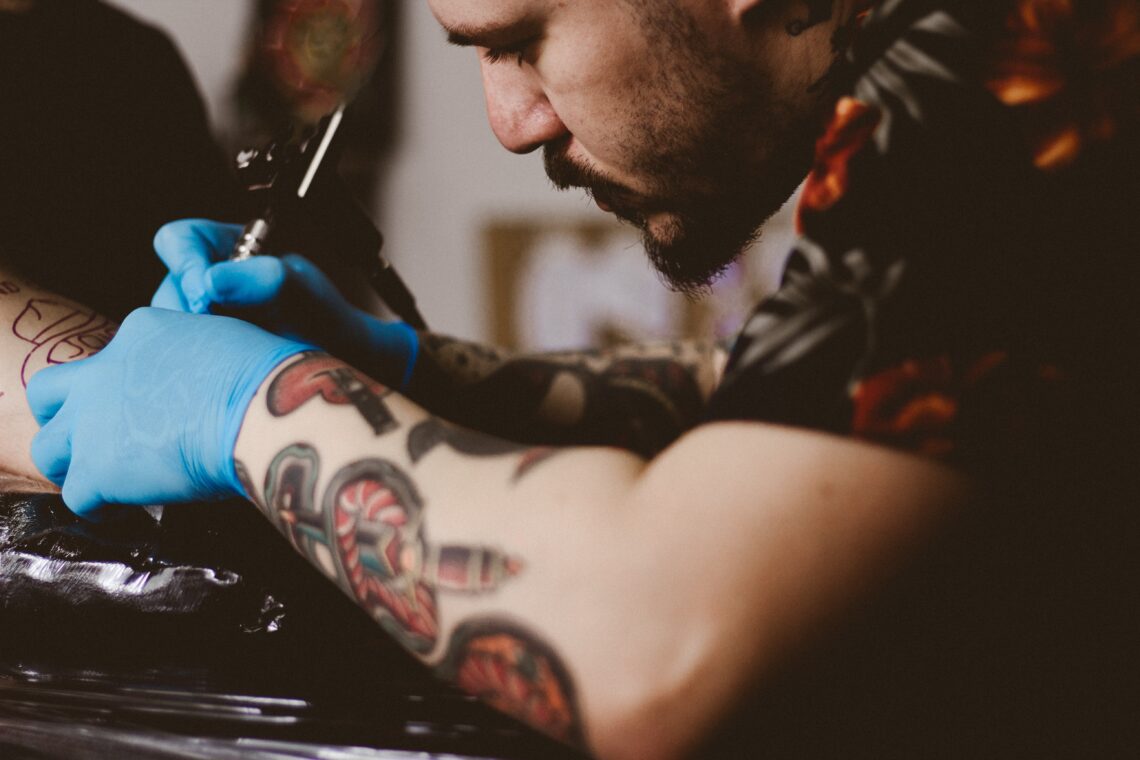
Taboos around tattoos
Sharon Ng was 18 when she got her first tattoo: a small rose on her inner ankle. She has since added two more pieces to her collection—a butterfly on her outer ankle and a Chinese dragon on her back. Unlike her first tattoo, these ones hold close personal significance to her.
“The butterfly represents my childhood memories and swimming. Butterfly was my favourite stroke,” she says. “I was born in the year of the dragon and I’m Chinese, so that’s what the dragon stands for.”
Ng recognizes the cultural barrier between her Chinese upbringing and getting permanently inked, so she strategically had her tattoos placed where they would be less visible.
“My Chinese parents used to be against tattoos and they still probably are, but they accepted me for getting them,” she says. “I think they’re more worried about what society would think of me, so I explained to them that I got them at the location on my body for a reason.”
According to a 2012 study, 22 per cent of Canadians have at least one tattoo on their body, while 11 per cent have multiple tattoos. The same survey also says that tattoos are popular among young people like Ng, with those aged 18 to 34 more likely to have a tattoo versus those aged 35 and up.
Ng advises those wanting to get a tattoo to bear in mind several aspects: think about the image’s placement, not to permeate anything offensive and consider that facing criticism is inevitable.
Lawyer Peter McLellan says in a 2016 Mondaq article that employers are legally allowed to choose not to hire someone based on visible tattoos. In fact, there are no laws that prohibit employers from discriminating against anyone with body art or piercings. The only exception is when the tattoos or piercings are linked to the individual’s ethnic or cultural background.
“It’s gonna be hard, but there will always be someone that judges you or stigmatises you,” Ng says. “You can’t control society, so seek support if it gets bad or try not to be surprised if someone negatively points it out. It happens.”
The University of Waterloo’s Healing Tattoos is a research project that began with the purpose of analyzing the healing meanings behind tattoos on their wearers. For example, people would often choose to get tattooed as a permanent memorial for a passed loved one. Other times, people would choose to get a tattoo to remember the struggles they have overcome, such as self-harm or cancer.
Jin Sol Kim, a PhD candidate at the University of Waterloo and a collaborator on Healing Tattoos, describes having interviewed a tattoo artist who had been asked by a young woman to cover up her stretch marks.
“He said, ‘You know, I never really thought about this particular tattoo as a healing tattoo until this very moment,’” she says. “So with that process, it’s kind of like you’re taking control over your body. You’re taking something that you thought was ugly and you’re revisioning that right on your body.”
Susan Cadell, a professor of social work and the principal investigator of Healing Tattoos, recalls speaking to a couple who had gotten tattooed in honour of their son, who had passed away in a car accident 15 years before.
“The very first one that the father got was identical to the tattoo that his son got,” she says. “It was hugely meaningful to that family in ways; in part because it kind of repaired and made them feel better about giving their son a hard time getting his tattoo.”
Cadell proposes that there could be a bigger reason behind the young generation’s fascination with tattoos.
“I think the big thing is that it’s people who are willing to challenge stereotypes [behind tattoos] and the older one gets, sometimes the harder that is to do,” says Cadell. “The younger generation is more willing to challenge that particular stigma.”
Kim highlights the key role in which social media plays in the popularity of body art.
“I think it’s connected to the speed at which they have exposure to de-stigmatization,” says Kim. “The younger generations are just so much more connected and so much more logged on to these spaces where they are able to see these images come up. They’re easily distributed and circulated right amongst their peer groups.”
Ng suggests that tattoos are one of the many ways people can express their individuality and self-identity.
“Besides the fact that they look cool, tattoos are art and it’s art that’s on us forever,” she says. “It’s something unique for ourselves.”
About the author
Alyssa Bravo is a former reporter for Youth Mind. She is a coffee fiend and likes music, movies and food. She wishes to travel to Italy and Greece, and hopes she’ll live to see the day the Toronto Maple Leafs win their 14th championship. When she’s not writing, you can probably find her watching videos of dogs or baby pandas.







